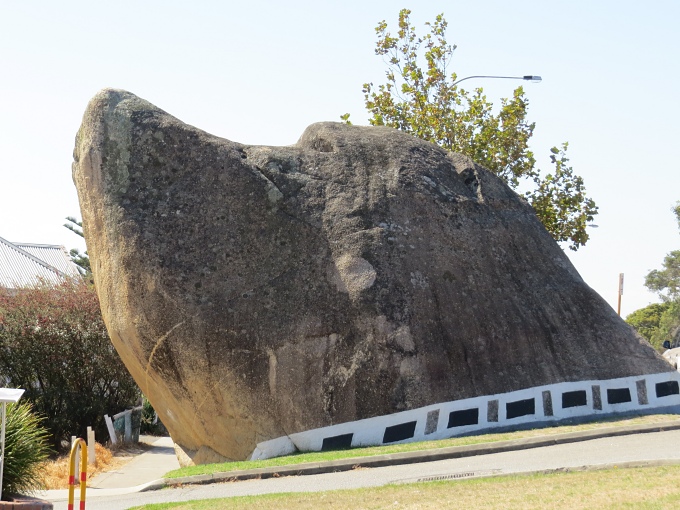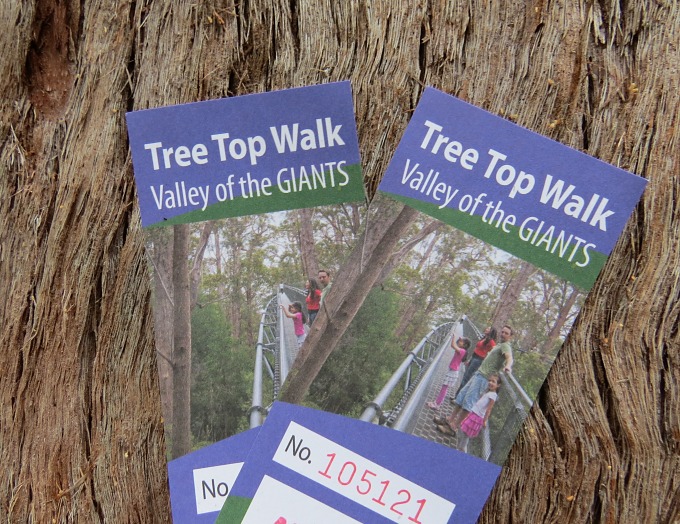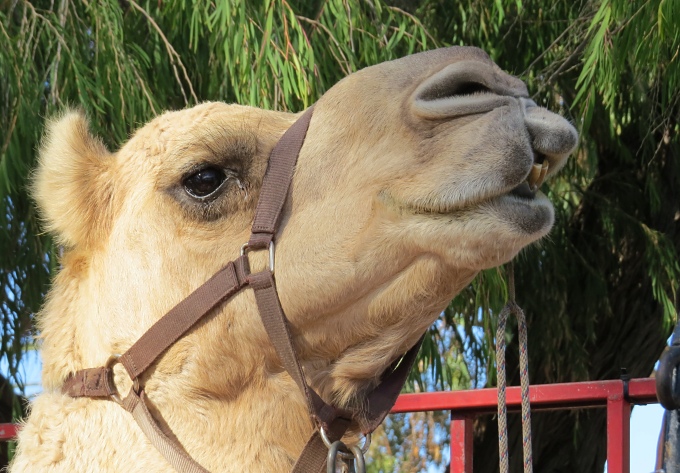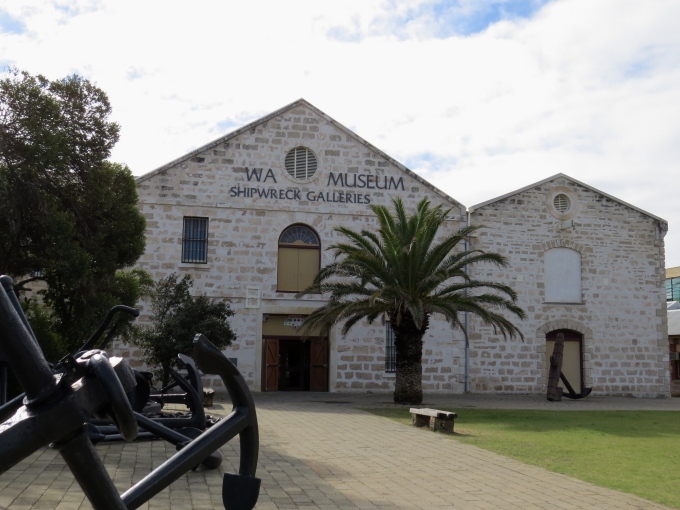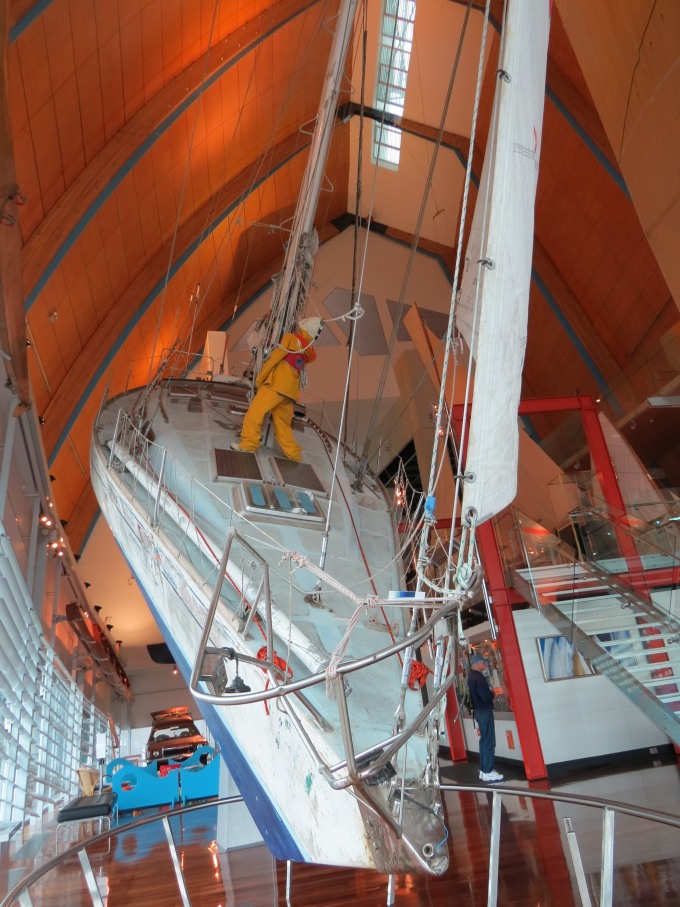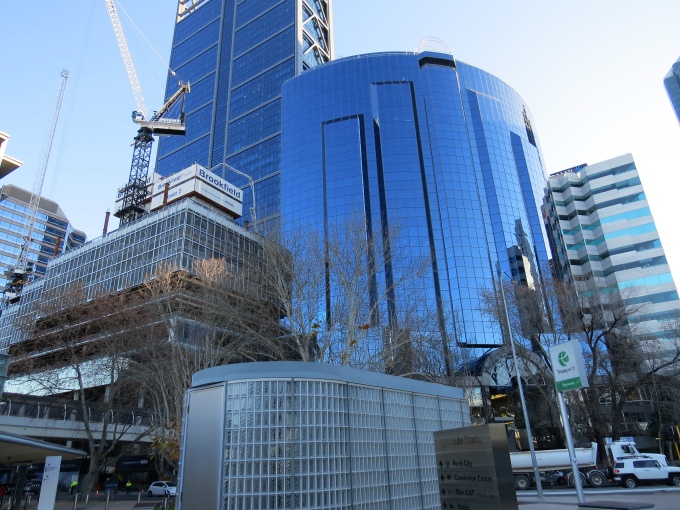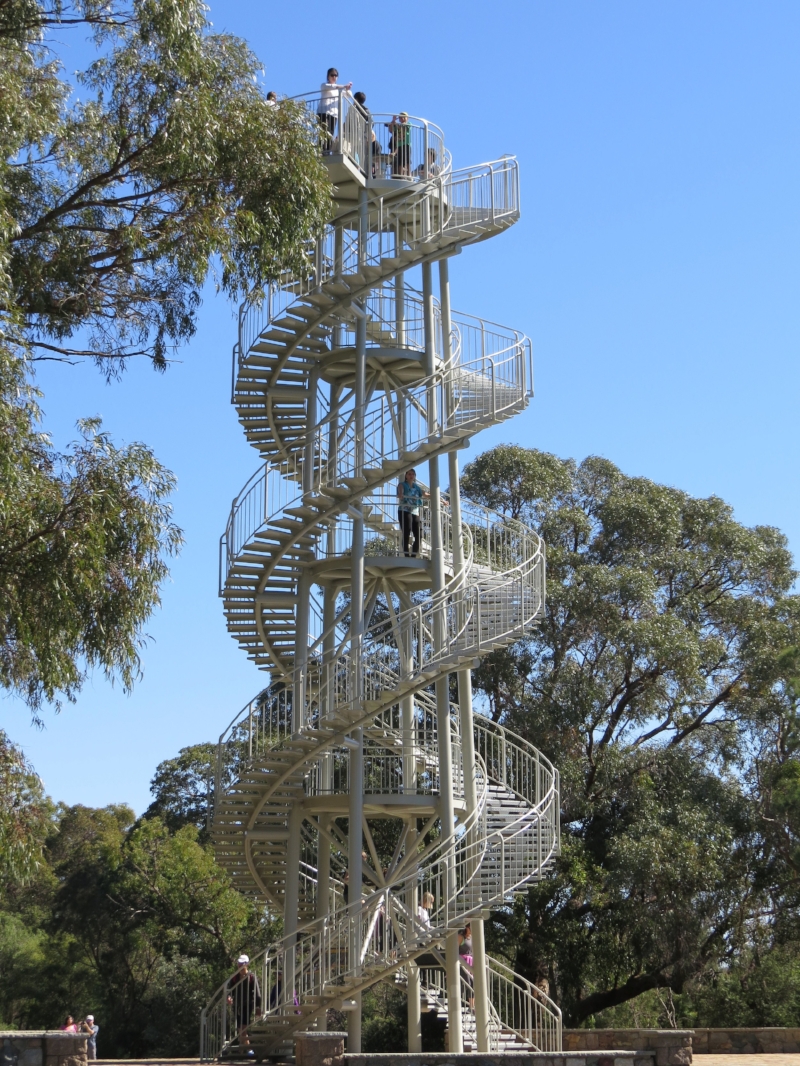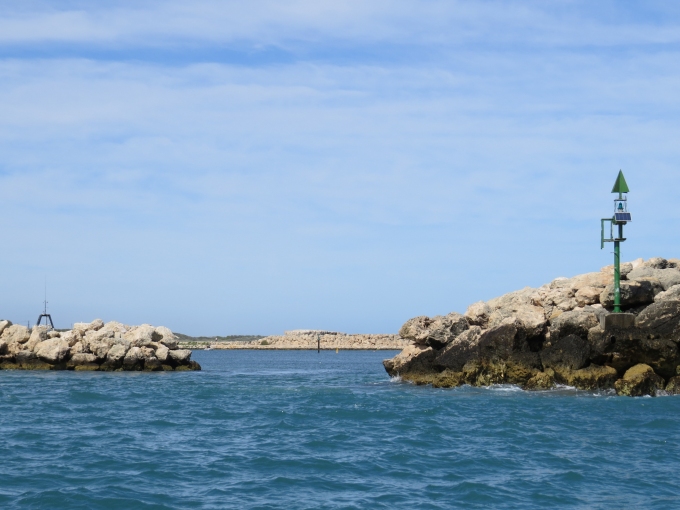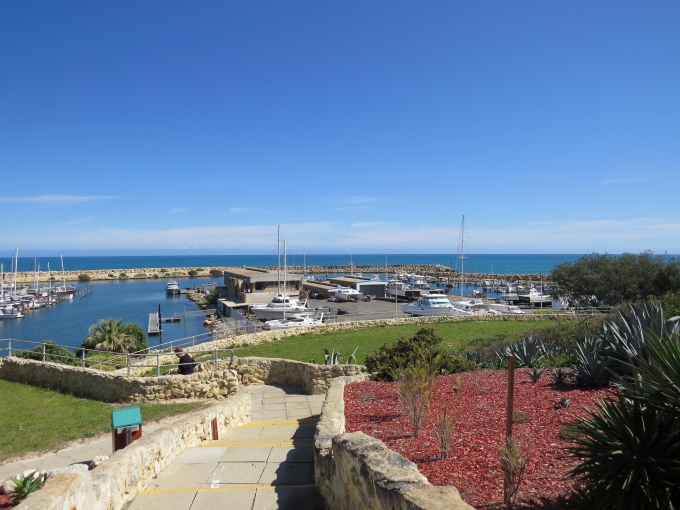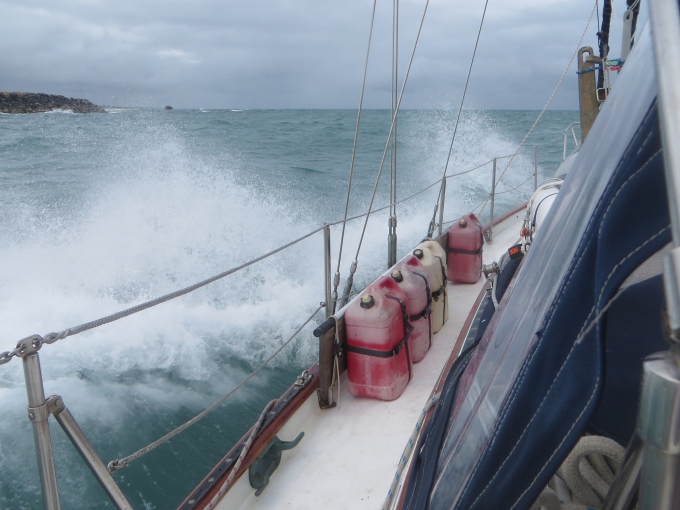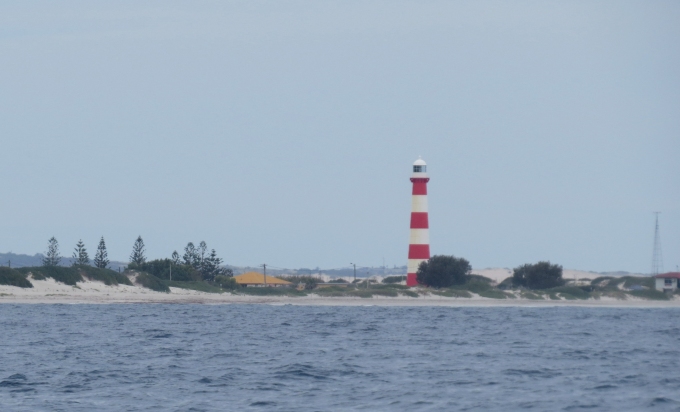Western Australia ... Black Swans, Outback and Sandgropers
Western Australia is the largest state in the largest island in the world. Its vastness is accentuated by the fact that most of its interior is remote, desolate Outback. Travel with us, but don't be surprised nor disappointed that during our extended stay, we still only covered a tiny portion of all this intriguing state has to offer.
The state of Western Australia is huge. It occupies about one-third of the Australian continent. With a land area of 2.5 million km² (965,000 mi²), but with a population of only 2.5 million for the whole state, there's lots of empty space with the most densely populated area around Perth and along its 12,500 km (7,500 mi) of coastline.
With its coast situated on the Indian Ocean, the capital city of Perth is closer to Singapore and Jakarta than it is to Canberra, Australia's national capital. There's a sense of isolation here … of sometimes being forgotten because the seat of national government is so far away (not unlike Juneau, Alaska or Honolulu, Hawaii, I'd reckon).
The Black Swan is the emblem of the state and has been associated with Western Australia from the earliest times. The Dutch sea captain, Willem de Vlamingh, explored the Swan River in 1697 and gave it its name due to the number of black swans he found there.
Western Australians are called sandgropers. Exactly what is a sandgroper? Well, there's some dissension, but some think it's an insect. Others believe it's because of all the sand (duh!) and the fact that Perth was built on sand dunes. Yet others contend it might have something to do with mining. In other words, who knows?
Western Australia is a big, big place, so prepare yourself for a long, long story despite the fact we left so much unseen. This page might require several visits and, yes, naps and snacking are allowed. We entered Western Australia in Eucla during our crossing of the Great Australian Bight. We made our way through the Recherche Archipelago to Esperance, our first real port of call.
Esperance
The last town of any size we'd visited was Streaky Bay on the other side of the Great Australian Bight, a couple of weeks prior, so we were looking forward to Esperance with pleasant anticipation. At first glance, hiding behind all the tall, stately Norfolk pines that line the Esplanade, it was hard to know what Esperance is really like or where the downtown might be. Once ashore, however, we made all sorts of fun discoveries as well as new friends. We are always amazed and grateful for the unbridled generosity that we receive from people we've never met before. During the short time we were in Esperance, we met some very hospitable, lovely, outgoing people who made our visit all the more enjoyable.
We wandered around town past the sculpture park on the foreshore and through the small, but lovely Don Mackenzie Waterfront Gardens. Perhaps, one of the most interesting exhibits we saw was at the Esperance Museum where large chunks of NASA's Skylab that had landed nearby in a fiery crash were on display. The city fined NASA $400 for littering. The fine was finally paid in 2009!
A bit more Esperance trivia? In January 2007, the national media claimed that Esperance experienced "the perfect storm" with wind gusts of up to 110 km/h (70 mph/hurricane force) which brought 155mm (6”) of rain in a 24-hour period. We read the article and hoped there was no “ perfection” forecast while we visited.
We took advantage of a borrowed car from Del & Mark to tour the area around Esperance. Cape LeGrande National Park was only about 50km (35mi) from town. The sweeping sand beach and aquamarine waters were stunning. We walked the beach, climbed up the dunes and evaluated how difficult it might be to land a dinghy here with the size of the rollers crashing into shore. Seeing kangaroos on the beach was absolutely awesome and they were certainly familiar with tourists. Further up the coast, we drove along the scenic Great Ocean Drive.
Albany
With light winds and occasionally no winds, we regretfully motored most all the way to Albany (pronounced like a man's first name, Al-bany), our next port of call. We traveled across King George Sound and found a free mooring in the well-protected waters off Emu Point. Don & Judith, friends of friends, welcomed us with open arms and a loaner car!
Albany is the oldest continuous European settlement in Western Australia, founded in 1826, two years before Fremantle or Perth. A British military outpost was set up here to discourage the French from making any claims. Following a very scenic tourist route, we sought out local landmarks and spectacular natural sights. We drove to the top of Mount Clarence for a look at the Princess Royal Fort and the ANZAC monument. Torndirrup National Park was particularly outstanding with impressive views of the Natural Bridge, a granite formation caused by the gradual wearing away of the rock by the Great Southern Ocean.
Because we had a car at our convenience and Cups was safely moored, we wandered a little further away from our home base. When I read Bill Bryson's In A Sunburned Country, I was convinced that I wanted to visit the Tree Top Walk when we arrived in Albany. Sometimes, we're disappointed in tourist attractions, but Bill Bryson usually calls 'em like he sees 'em and we figured if he liked it, we probably would, too. The Treetop Walk, as the name suggests, is an elevated walkway that gradually climbs to 40m/130' into the canopy of a giant tingle tree forest. Yes, tingle trees … how can you pass that up? The red tingle (Eucalyptus jacksonii) is a eucalypt, like so many Australian trees, and is endemic to southwest Western Australia. In the whole world, it only grows here. A tall tree which can grow up to 75m/~250', with a stout base (up to 24m/75'), tingle trees can live for 400 years. “Tingle” is thought to be the Aborigine Noongar word for the tree. Bill Bryson was right ... the Valley of the Giants was awesome.
The Treetop Walk was only part of the reason for a land trip. We originally met Maree, Tom and young Floyd when they were volunteer lighthouse/island keepers at Deal Island in the middle of the Bass Strait. They live in Walpole, not far from the Valley of the Giants, and they offered us the hospitality of their home for a few nights and some local touring. It was great catching up with them.
Rounding Cape Leeuwin
We sailed along the Rainbow Coast from Albany to Cape Leeuwin, the most southwesterly point on the mainland of the Australian continent. The cape was named by Matthew Flinders in honor of the first known ship to have visited the area. The Leeuwin ("Lioness"), a Dutch vessel, had charted some of the nearby coastline in 1622. Cape Leeuwin has a large number of reefs, rocks and tiny islands, some extending more than 5 miles offshore, making it particularly hazardous and at least 23 ships have come to grief here. We approached with anxious anticipation, but it was a non-event ... fair weather, light winds and no catastrophes encountered. Cape Leeuwin was the fourth of the Five Great Southern Capes under Nine of Cups' keel. As we rounded, we gave a tot of rum to Neptune, thanking him for protecting Nine of Cups and her crew on our many passages and asking for his continued protection in our future passages. We also saluted the many sailors who, due to misfortune, perished in these waters.
The Cape Leeuwin Lighthouse which you can barely see in the picture above, was completed in 1896 and is the tallest lighthouse in Western Australia. For Australians, Cape Leeuwin is considered the point where the Indian Ocean and the Southern Ocean meet. Most other nations consider the Southern Ocean to only exist south of 60ºS – and by this definition, Cape Leeuwin is where the Pacific and Indian Oceans meet. By either definition, however, we were now in the Indian Ocean – a new ocean for us!
Geographe Bay - Busselton
After an evening anchorage in Hamelin Bay, we made our way around Cape Naturaliste into the calm, protected waters of Geographe Bay, named by French explorer, cartographer and naturalist, Nicolas Baudin, after his ships. Baudin led a French expedition to Australia in 1801. We anchored one night in Quindalup, then moved on to Busselton, a lovely little city. We enjoyed the cafes and sidewalk sculpture, the old Court House and walks along the foreshore. The bust of Nicolas Baudin above is further enhanced by the solitary anchored boat in the background. Could that be Nine of Cups?
The jetty, a city icon, is definitely the highlight of Busselton. Construction of the jetty began in 1853 and was originally designed for loading timber. Because the bay waters are so shallow, the jetty was continually extended until the 1960s when it reached its current length of 1841m/5990' ... over a mile! It also featured a rail line along its length that originally operated as part of the railway line into Busselton from nearby Bunbury. The track is still used to transport tourists from one end of the jetty to the other.
My favorite pic of Busselton ... the Jetty at sunrise.
On to Bunbury
A grueling, windless 26nm motor-sail from Busselton had us anchored in Koombana Bay off Bunbury by mid-day. Bunbury is the third largest city in Western Australia and an active shipping port for wood chips, minerals and grains. It's called the City of Three Waters because it is surrounded on three sides by water … the Indian Ocean, lovely Koombana Bay (where we anchored) and the Leschenault Inlet.
We enjoyed Bunbury and walking along its scenic foreshore, but it was the discovery of a steampunk exhibit at the local art gallery that really made the day. Did you ever experience an occasion when you visit a place just because it's there with no expectations at all and it turns out to be wonderful? We'd never heard of steampunk before and then we couldn't get enough of it. It's fun, amazing, out-of-the-box, ingenious contraptions, costumes, artwork and even videos that work. Through the use of cogs, wings, hearts, military insignia, compasses and other "found objects", this outstanding art form entertained us to the max.
Welcome to Mandurah
We could not have been more welcomed than we were at the Mandurah Offshore Fishing & Sailing Club. Tim, the marina manager, had been following our blog and as we got close to Mandurah offered a stay at the marina in exchange for a presentation to club members. Wow! A safe, beautiful place for Nine of Cups and us AND a chance to talk about our adventures to folks who appeared to be interested. Win-win-win.
We had lots of boat repairs and maintenance to complete while we were in port, but it wasn't all work. There was considerable time for exploring and socializing, too. The folks in Mandurah were so friendly and hospitable, we could have been entertained morning, noon and night if the captain hadn't insisted on getting at least some work done.
Fremantle
Fremantle, or Freo as the locals call it, is located at the mouth of the Swan River and serves as the port for Perth. We maneuvered our way through heavy ship traffic to the friendly Fremantle Sailing Club that offers "foreign yachts" free berthing for a few days. We took advantage of their generosity and tied up at the wharf.
There was lots to see and do and we wasted no time. We visited the Round House & Tunnel, the city's oldest building and the oldest intact building in Western Australia. Completed in 1831, it was built as a gaol (jail) and sits high atop Arthur Head with a great view of the city. When whaling became a thriving industry, the Fremantle Whaling Company excavated a tunnel beneath the Round House “to facilitate the transport of whale and merchandise from the beach to the town.”
The galleries of the Shipwreck Museum are housed in a restored 1850's warehouse building. We were very impressed as we entered a whole new world. Hundreds upon hundreds of relics from shipwrecks along Western Australia's coastline were displayed ... pieces of porcelain and china, Spanish coins and 17th century Dutch canons. The museum's gem, however, is in a dimly lit gallery and displays the original timbers from the hull of the Dutch East India Company's ship, Batavia, built in Amsterdam in 1628 and shipwrecked on her maiden voyage in what is now known as the Abrolhos Islands. The subsequent mutiny and massacre that took place among the survivors is the subject of much conjecture and speculation and makes for interesting reading.
When it comes to maritime museums, we've visited so many, we're pretty jaded. We've been there and seen that and really, what more could we see that would impress us? And then we visited the Western Australian Maritime Museum. In a word … WOW! This world class, thoughtfully laid out, gem of a museum is outstanding and we relished every minute we were there. Perhaps the most striking aspect of the museum is the unique way in which every aspect of Fremantle's boating and shipping history is displayed. There are real boats in each gallery … some are suspended in the air, some invite you aboard, some allow a look inside.
Jon Sanders' boat, Parry Endeavor, hangs precariously mid-air, bow dug into the sea as Sanders grasps the mast anticipating the 100' (30m) following wave about to crash down around him. We shuddered as we read this. Sanders, a Perth native, holds several world records including the first solo triple circumnavigation of the globe in 1987 which coincidentally is the longest distance ever sailed continuously by any vessel … 71,023 nautical miles. That's about as many nautical miles as we sailed total in 15 years.
And then there's the megamouth, an extremely rare deep water shark. It surprised us as we peered into the portholes of a large tank.
Friday is market day in Fremantle and we were anxious to see what was on offer. This market, built in 1897, has been operating ever since. It has undergone a few changes since then, but it maintains its allure as a marketplace and meeting place. The place was alive with vendors, hawking their wares. Beyond the freshies, we saw everything from boomerangs, to emu oil, to native American Indian headdresses (???).
We trudged up the hill to the Fremantle Prison. No one there to visit … it's a tourist attraction nowadays … and the most intact convict establishment in Australia. According to their website, Fremantle Prison was built by convicts as their own barracks between 1852 and 1859 using limestone quarried on site. For 136 years, this prison was a place of hangings, floggings, dramatic convict escapes and prisoner riots. Inmates included imperial convicts, colonial prisoners, enemy aliens, prisoners of war and maximum-security detainees. The last flogging occurred in 1962 and the last hanging in 1964. Australia abolished the death penalty in 1984. Fremantle Prison is now a World Heritage Site.
Perth, Western Australia's Capital City
We took a bus from Fremantle to visit Western Australia's vibrant capital city, Perth. We bought discount tickets in advance on-line for a hop-on/hop-off, double-decker sightseeing tour. We've found this is the best way to get a quick overview of a new city and then have the option of stopping off or returning to places that seem interesting. Perth was nominated by John Glenn as the 'City of Lights' as the city shown brightly when he passed over in Friendship 7 in 1962 and became the first American to orbit the Earth.
We were limited in time, so we made every minute count. Friends recommended King's Park, so after a circuit on the bus, we headed there first. King's Park is the largest inner city park in the world. Yes, it's even bigger than Central Park in New York City. It was also the first park to be designated for public use in Australia back in 1872. The views of the city across the Swan River were superb.
Gija Jumulu is a giant boab tree that journeyed 1717 miles (3,200 km) from a remote area of Western Australia to its new home in Perth in 2008. This 36-ton tree, estimated to be about 750 years old, needed to be moved to make way for a bridge on the Great Northern Highway. They claim this to be the longest distance a tree of this size has traveled ... and who's to argue?
We walked along a path that followed the Swan River to find the Federation Walkway and the famed “glass bridge”. The walkway leads across an elevated glass and steel arched bridge suspended 170' (52m) in the air, allowing visitors to walk through a eucalypt tree canopy with treetops and their residents at eye level.
The Perth Mint is the world's oldest mint still operating from its original premises. In 2012, the mint unveiled the world's biggest and most valuable new coin, weighing in at one ton of 99.99% pure gold. Government House, as its name would imply, was governmental-looking and imposing. It wasn't the buildings, however, that caught our attention, but rather the unique street art and statuary that met us at every turn that was so delightfully appealing. Like Percy Button, for instance, a tribute to an iconic local street performer who entertained from the 1920s-1950s ... or the Peter Pan statue and bench from the movie Notting Hill in Queen's Garden ... and the bronze kangaroos that seemed to be at home in the park sipping from the fountain. And below ... an Obelisk of Ores mined in Western Australia, a very unique Bell Tower and a DNA Helix that allows you to climb to the top for great views.
We could go on and on about Perth, but it was time to leave. The clock was ticking and there was lots more to see before we departed Australia and crossed the Indian Ocean. Like quokkas, for instance ... we wanted to see quokkas!
Rottnest Island and Quokkas
Quokkas? What the heck is a quokka? How can one country have so many animals (mostly marsupials) that we've never, ever heard of? How could we possibly miss out on seeing an animal that is rarely found elsewhere in the world? A visit to Rottnest seemed almost mandatory if only to seek out the island's most famous inhabitants.
Rottnest … Rotto to the locals... is only 10nm miles away from Fremantle. It's a small island, ~7 miles long (11km) by ~3 miles wide (4.5km) at its widest point, but it's been an Australian A-class nature reserve since 1917. The Dutch were the first Europeans to note the island on their maps and visit. Rotte nest (meaning rat's nest) was named by the Dutch captain, Willem de Vlamingh who explored the island in 1696 and thought the endemic quokkas he saw were giant rats. The name stuck.
There's a significant amount of history on the island and we duly made the rounds of the island's buildings and read the informative placards, but as you can see from above, the critters consumed most of our attention. The word quokka is derived from the Aboriginal Nyungar word, gwaga. Though they look like little kangaroos as they hop around, they're also able to climb trees. They're herbivorous little critters and we saw them munching on grasses and Norfolk pine needles when they weren't begging visitors for food. There are an estimated 10,000 of these cat-sized macropods (big footed) on the island. Though there are a few other places where they occur on mainland Australia, predators and loss of habitat have all but wiped them out. Here on Rottnest, they're free to live and thrive … and they do.
There were lots of other interesting island residents including the Kings skink shown above that startled me when he crawled out from the bush and onto my path. We saw lots of birds and a few other skink species, but luckily no duggite, a poisonous snake native to the island.
Two Rocks
We left Rottnest after just a couple days. Its nature reserve status renders it an expensive place to visit for budget-minded cruisers. We were heading north to Geraldton, a good jump-off spot to begin our Indian Ocean transit. We'd hoped to get further up the Western Australia coast this season, but as usual, we were lagging behind. With northerly winds forecast, we charted our course for the Two Rocks Marina only 35nm away. It appeared to be a good, protected place to wait for a better forecast.
The entrance to Two Rocks is a bit dicey. It's quite narrow, and we could see huge rollers breaking on the reefs which line the marked channel to the marina entrance. We had the leading lines aligned and felt the insistent push of the following seas as we approached. We made a sharp right turn in the confused waters, hugged the seawall and we were in the calm harbor behind the breakwater.
We came around on the inside of a rather ramshackle, guano-covered fuel dock to tie up. David motored up slowly and I managed without incident to lasso the sturdiest looking of the wooden pilings. The “making fast” process was slow. Secure pilings were at a premium. There was a fair amount of surge at the dock and each line needed to be fitted with a chafe guard. We rigged up the fender board to protect our topsides from rubbing against the huge black rubber tires which lined the wharf.
A huge Neptune statue stood sentry on the hill above the marina and we found that he was a vestige of the nearby abandoned Atlantis Marine Park. Read an old blog about Neptune, waugals and Aboriginal Dreamtime.
Leaving Two Rocks posed even more problems than our dicey arrival. A local lobsterman told us this was the worst he'd seen it in years. After nearly a week waiting for southerly winds and for the swell to die down enough to negotiate the narrow exit from the marina into the Indian Ocean, it finally looked like escape day. We trudged to the top of the hill before 0700 to see how things looked. It was much improved from the huge waves of the previous two days, but still every once in awhile a breaker of some import made its way to our exit path. We decided to go for it.
We stowed our gear and lashed down everything securely, then headed for the exit. I said a silent prayer to Neptune to hold off on any breakers until we were clear. David revved up the engine and out we shot … about as fast as a sailboat can go. There was no turning back and as I peeked around the corner and saw a breaker coming, I held my breath. We made it around the corner in time to take the wave on the bow. David kept us into the waves and managed to keep Cups on our incoming track with the leading lines aligned behind us. It was only 3.5 nm over the reefs to open ocean, but we were barely making 3 knots … it was a long, exhilarating hour and we were both queasy by the time we got through. The sky had turned grey. The sea was grey. The day was grey. In fact, our faces were a bit grey, but we had escaped!
Port Denison & Dongara
An easy overnight passage and we were the only sailboat tied up at the small municipal jetty at Port Denison, a lobstering port. There's not much in the way of amenities in Port Denison. We walked up the hill to the Fisherman's Lookout. The views of the harbor below, the reefs and the entrance were outstanding. They don't call this the Coral Coast for nothing.
We walked to the nearby town of Dongara, also known for its crayfish, and enjoyed the walk ... mostly. Read more about Dongara here. We spent two gloriously calm, quiet nights on the Port Denison Jetty before heading north once again.
Geraldton
Gero, to the locals, was a quick, uneventful 45 nm motor-sail on calm seas. By mid-afternoon we were past the Point Moore Light and heading into the anchorage behind the breakwater.
We had a few problems in Geraldton that might amuse you. Obtaining fuel was more difficult than ever and Marcie got locked in the marina loo for an hour or so and the windlass crapped out. All in all, however, it's a nice little city and we enjoyed exploring ... when we weren't trying to buy fuel or get out of the loo or installing a new windlass.
Australian customs and immigration officer checks us out for the Cocos Keeling Islands.
We visited the Geraldton Art Gallery and then climbed Mount Scott (more of a hill than a mount) to view the HMAS Sydney II memorial, a sombre reminder of the lives lost on the sinking of two ships, one Australian and one German, during WWII. Along the foreshore, there was some fun public art including the Rubik's cube toilets. We enjoyed the Western Australia Museum and its Shipwreck Gallery and the Camel Bar which touted "World's Biggest Collection of Camels" and the Platform Markets located on an old railroad platform. But forefront in our minds, we knew it was time to leave. We completed all the chores and repairs and prepared to be on our way.
With a good weather window, we checked out of Geraldton and set sail for the Cocos Keeling Islands, 1400 nm away. Up for a long sail? We’re on the way to paradise!














